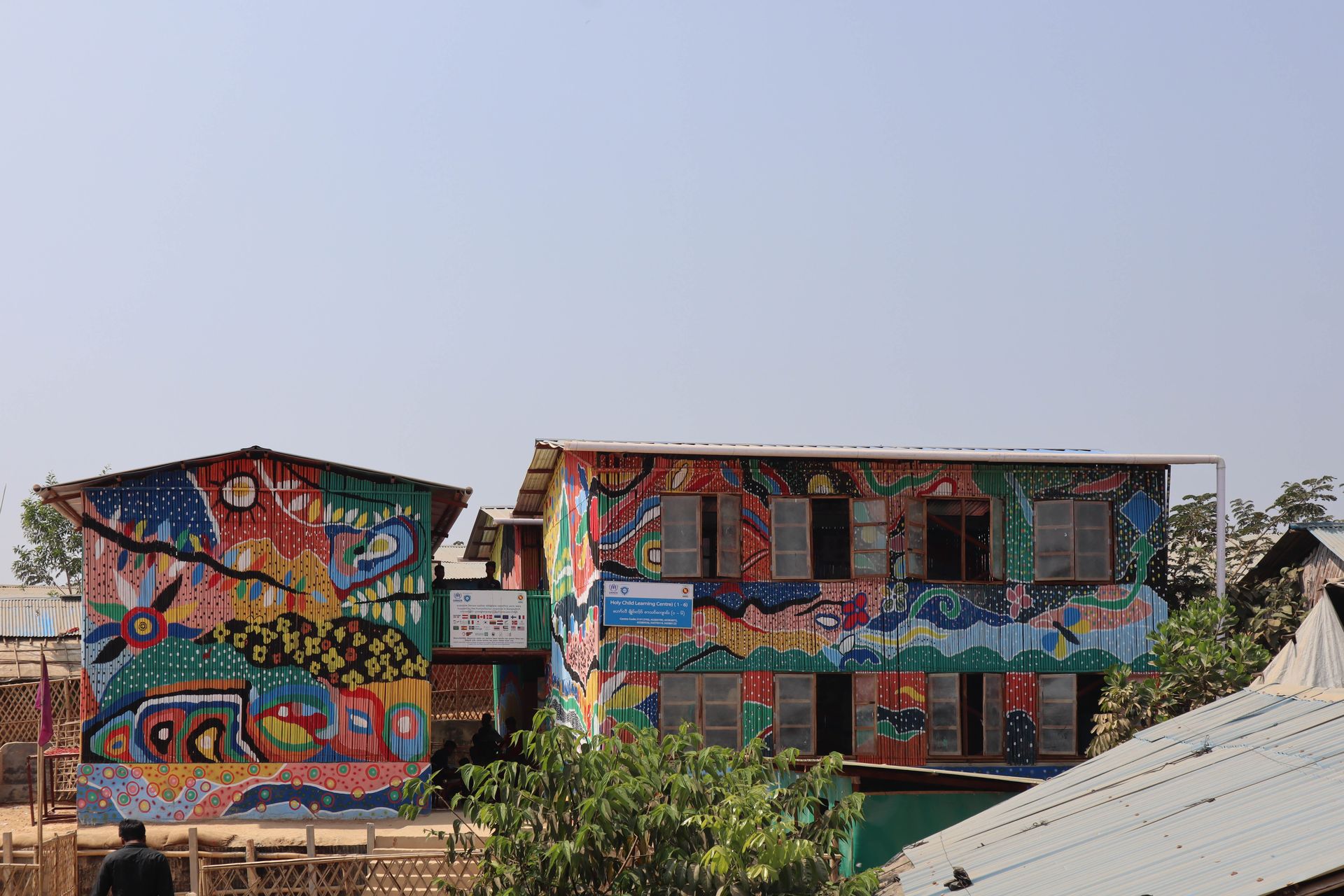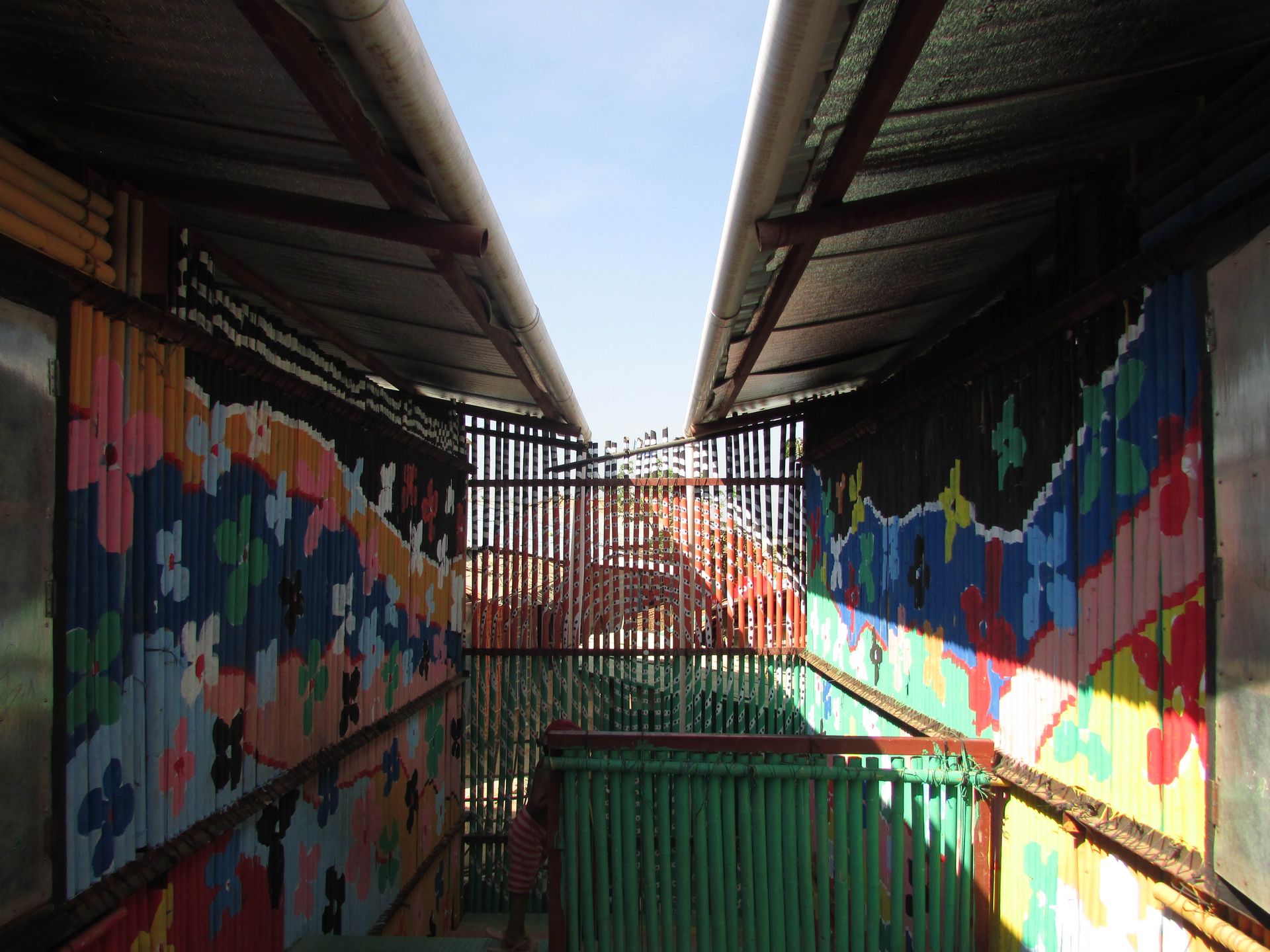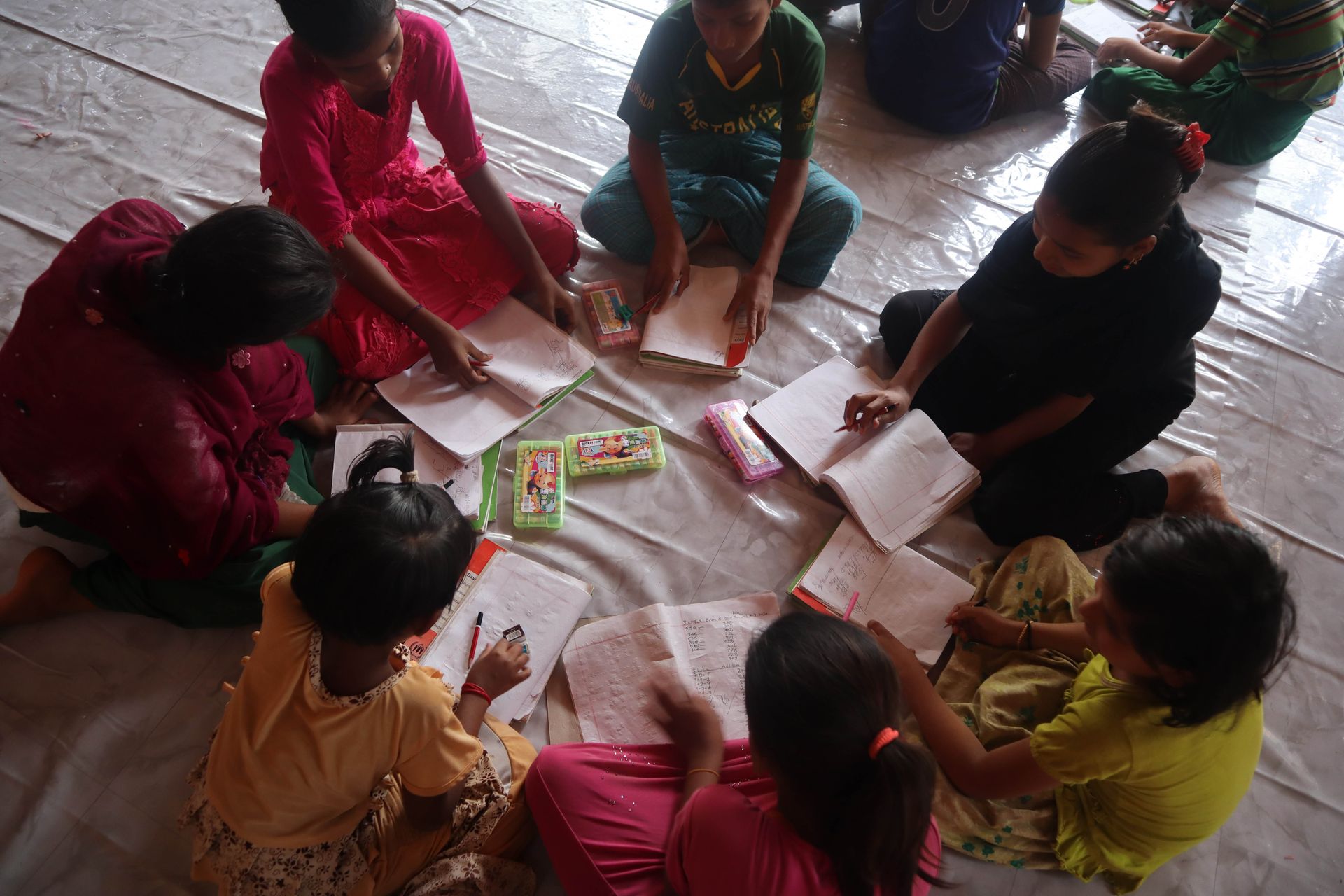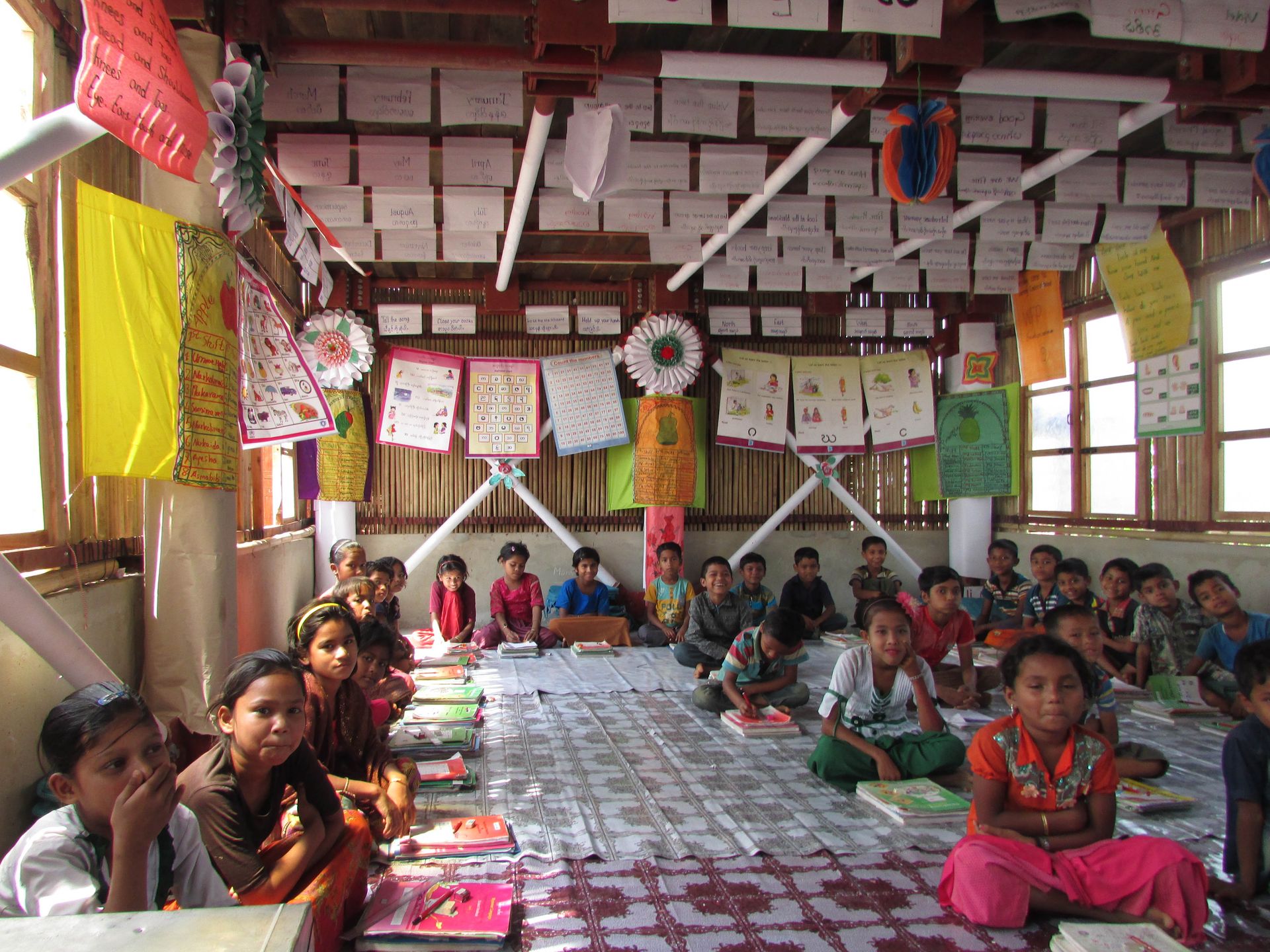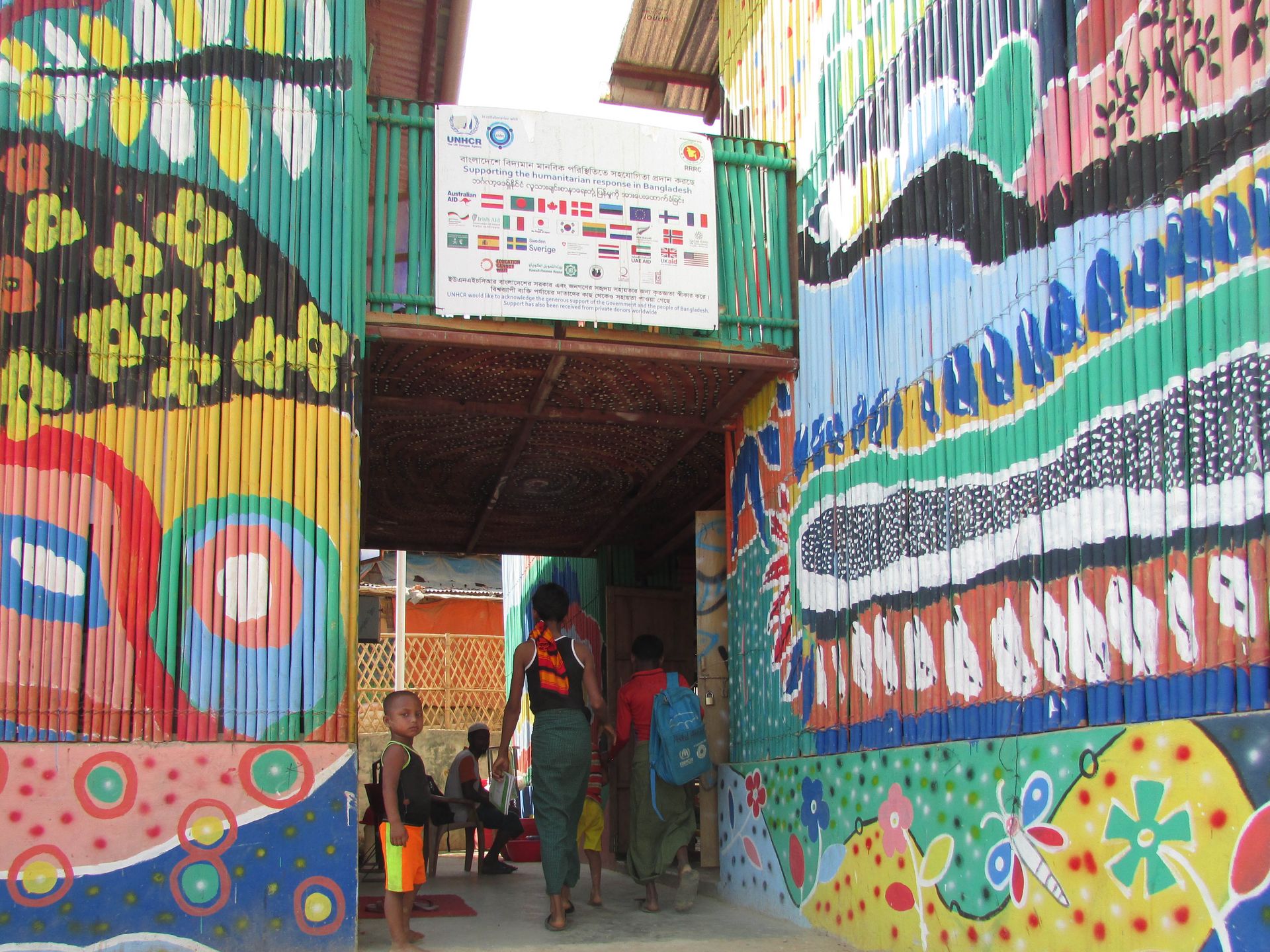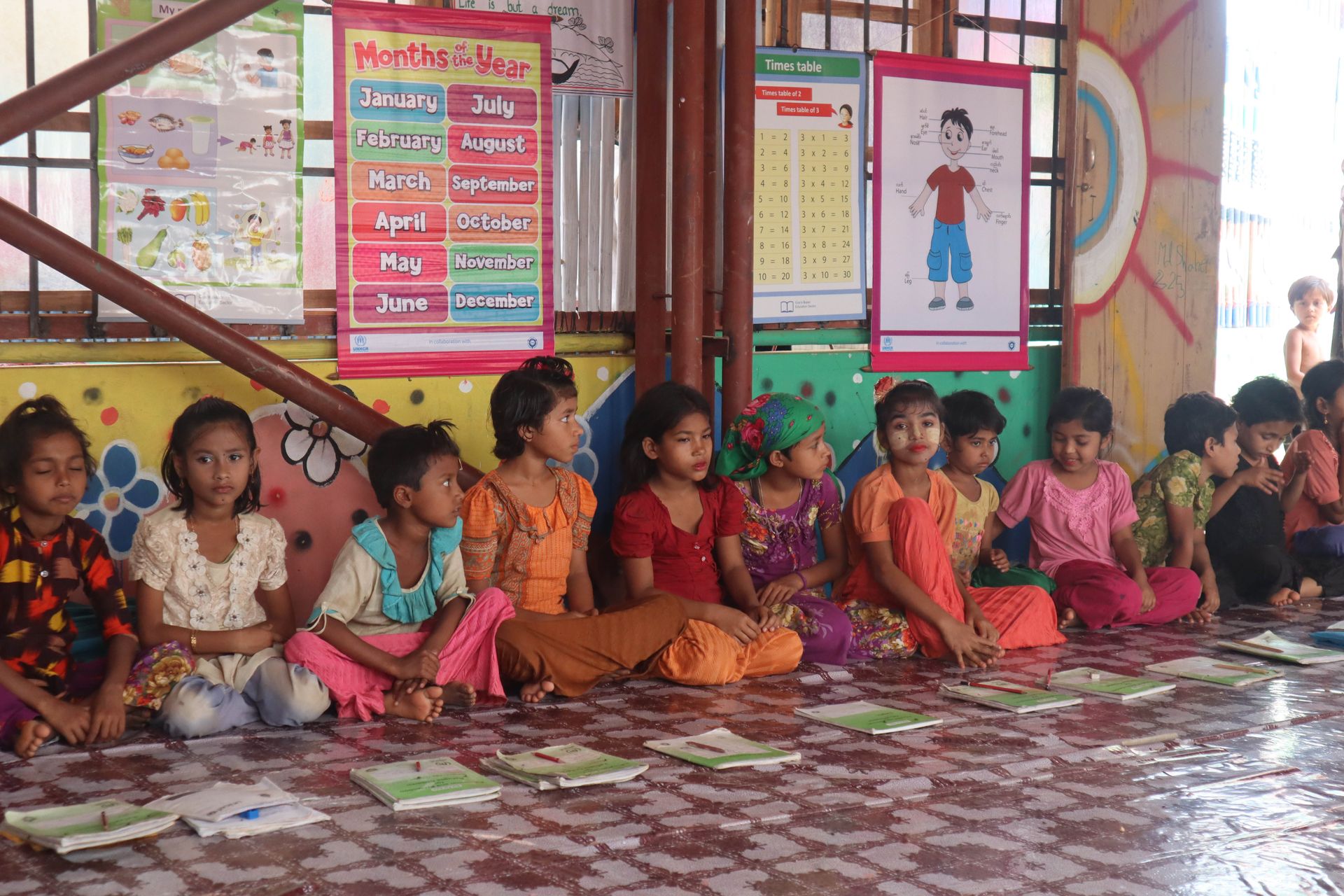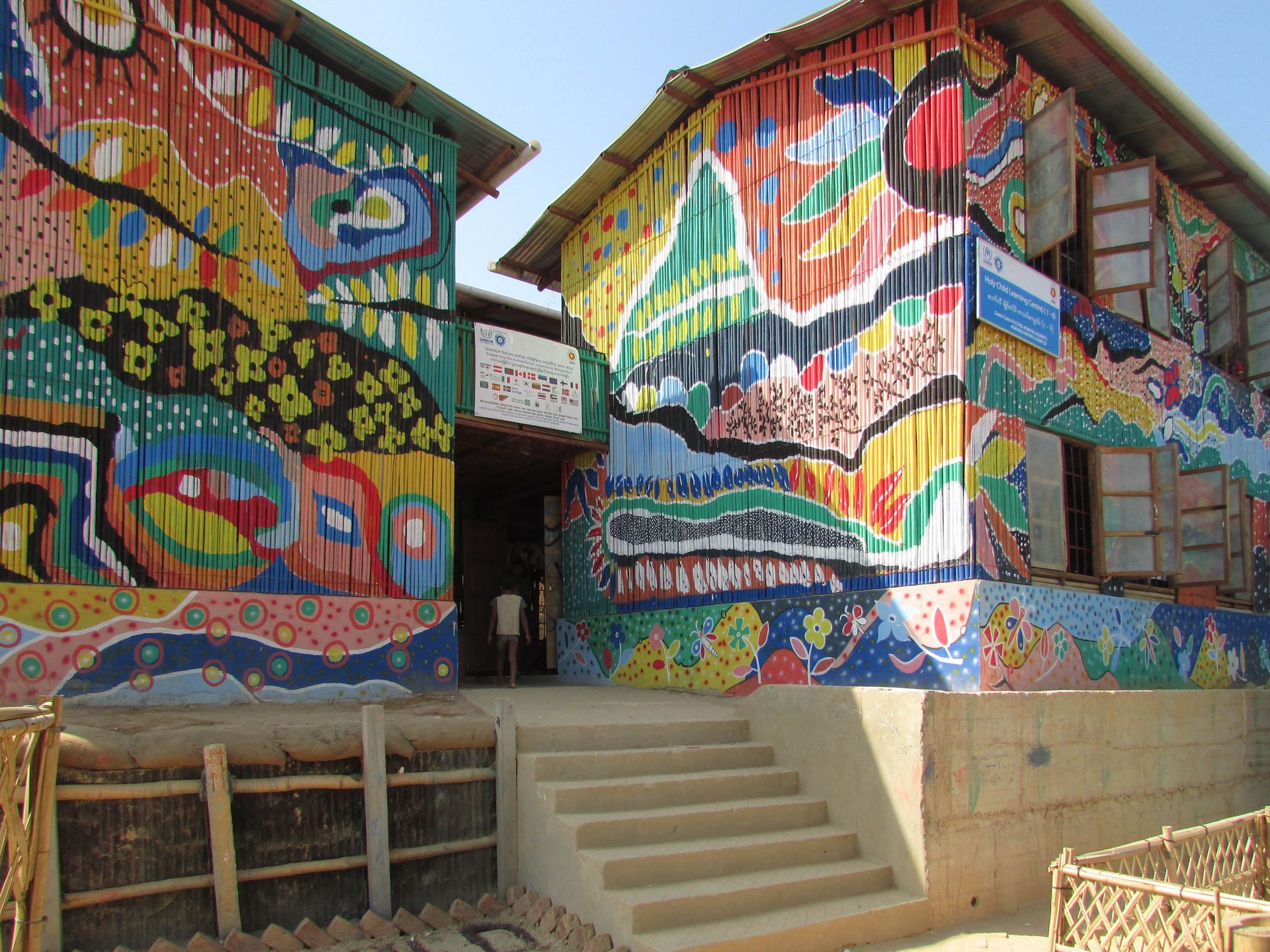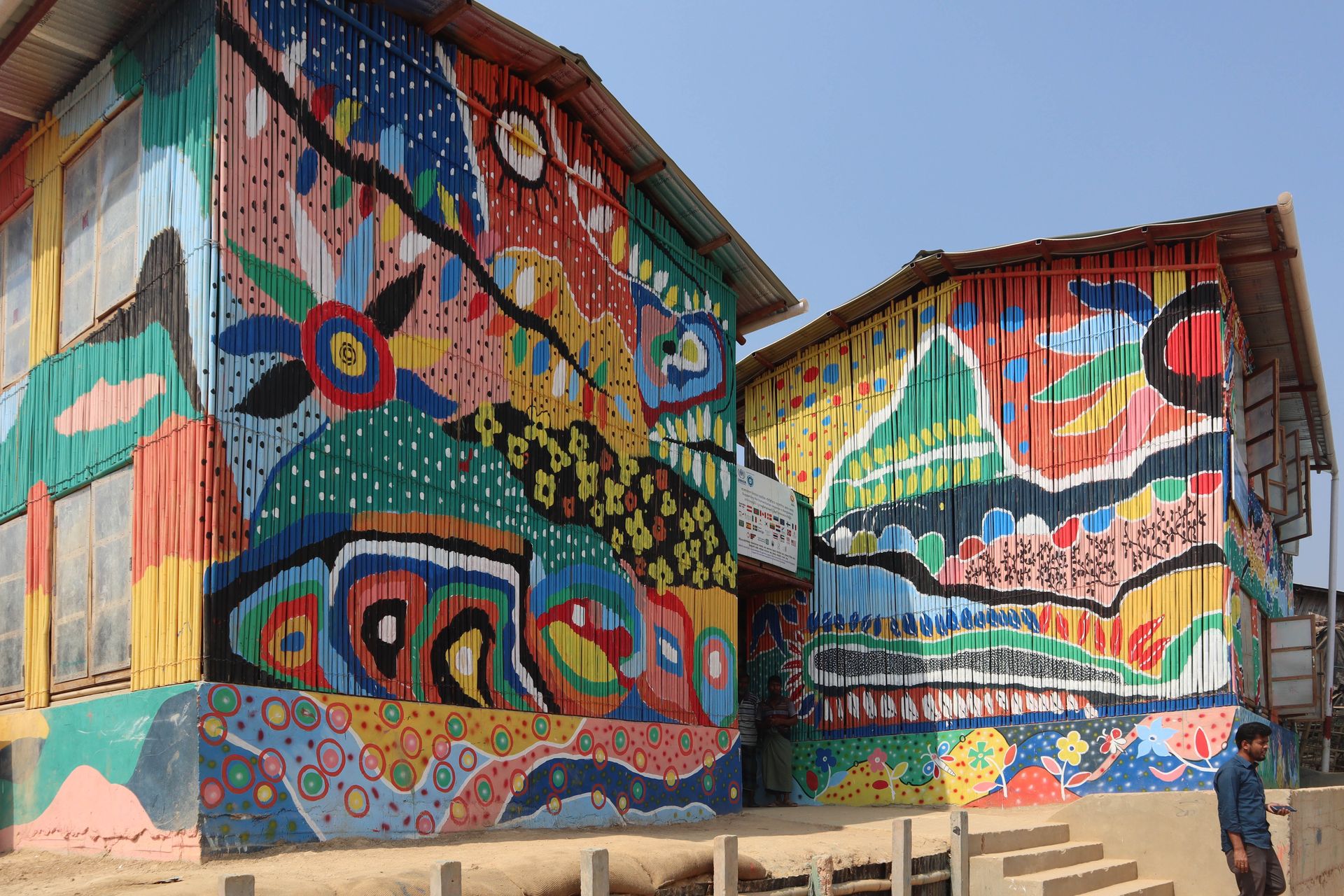Two Storied Learning Centers.
Since August 25, 2017, when the latest influx of Rohingya refugees from Myanmar to Bangladesh began, the number of refugees in Bangladesh has steadily grown. UNHCR continues to scale its response, offering lifesaving support to refugee families, particularly focusing on the most vulnerable individuals, including women, children, and the elderly. In 2018, UNHCR and the Government of Bangladesh (GoB) embarked on a joint registration exercise targeting the refugee population. This exercise helps advance refugees’ access to protection services, protects them against refoulement, and ensures their right to voluntary return is safeguarded once conditions are conducive for return. The population planning figure for 2020 is 840,000 refugees, in line with estimates provided by the Government of Bangladesh and UNHCR's joint registration exercise, as reflected in the 2020 Joint Response Plan (JRP). The crowded camps limit the number of learning centers that can be built, leading most learning centers to operate three daily “shifts” of just two hours each in order to reach a larger number of children. The UNHCR-CODEC EPRC Project, implemented by the Community Development Centre (CODEC), is one of the pioneering organizations in designing and establishing low-cost and sustainable Two-Storied Learning Centers in the Rohingya Camps.
The structure of the Two-Storied Learning Centers is designed with Hollow Steel Tubes, making it lighter than using Steel I Sections and easier to transport in the hard-to-reach Rohingya Refugee camps. The steel structure is also built in such a way that it can easily be taken apart and transported to another location if required. All joints in the structure are bolted joints for this purpose. The structure is strengthened by cross-bracings to make it more resilient during the frequent cyclonic storms in the area. The concrete foundation supporting the structure is also designed considering uplift forces and landslide issues. The hard bone (Steel Structure) is covered by a soft skin made of Mooli Bamboo. The Mooli Bamboo facade makes the structure more environmentally friendly and familiar to the Rohingya People and Students. The entire Mooli Bamboo Facade is laced together with ropes, allowing for easy replacement of any bamboo if needed in the future. Maximizing natural light and ventilation in the structure were given utmost importance in the design to make it more climatically comfortable for the students.
Artworks were introduced on the facades to make them more interesting for the children and to create a lively and warm learning space. My colleague, Mr. Tasadduk Hossain Dulu, an Artist, assisted us in this process. The children and the teachers were intimately involved in the artworks, painting their dreams with colors they like in their own Learning Center. Upon completing the construction of these learning centers, the surrounding Rohingya Community, students, and teachers expressed great satisfaction with their new facilities. It fostered a sense of belonging within the community, which stands as the most notable achievement of the project. Already, 18 such Two-Storied Learning Centers have been established.
